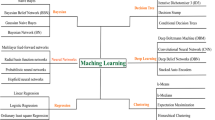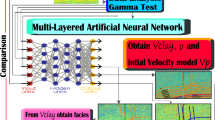Abstract
Inversion of hypocenters is the first and most fundamental step in the study of seismic activities. It requires solving the nonlinear relation between the travel time and hypocenter locations, which is heavily dependent on the knowledge of the medium properties, most importantly the velocity structure. In this study, we prove that machine learning (ML) methods including artificial neural networks (ANNs) and support vector machines (SVMs) can relocate hypocenters without a priori knowledge of the velocity structure. We train ML models with acoustic emissions (AEs) created by breaking pencil leads at known locations on a laboratory fault, using the relative P-wave arrival time as the input and AE source locations as the output. The resultant ML models can accurately relocate AEs on the fault surface. With carefully chosen training strategies, the ANN model achieved better accuracy than the SVM model. This study suggests that ML methods can provide effective and accurate approaches for relocating seismic events in a medium with unknown velocity structures.






Similar content being viewed by others
Data availability
The data and code used in this study can be found in the following repository: https://github.com/qzUCB/ML_AE_relocation.
References
Akaike H (1973) Information theory and an extension of the maximum likelihood principle. In: Petrov B, Csaki F (eds) 2nd international symposium on information theory. Akademiai Kiado, Budapest, pp 267–281
Aki K, Lee WHK (1976) Determination of three-dimensional velocity anomalies under a seismic array using first P arrival times from local earthquakes: 1. A homogeneous initial model. J Geophys Res 81(23):4381–4399. https://doi.org/10.1029/JB081i023p04381
Borchani H, Varando G, Bielza C, Larrañaga P (2015) A survey on multi-output regression. Wiley Interdiscip Rev Data Min Knowl Discov 5(5):216–233
Foresee FD, Hagan MT (1997) Gauss–Newton approximation to Bayesian learning. In: Proceedings of international conference on neural networks (ICNN’97), vol 3. IEEE, pp 1930–1935
Geiger L (1912) Probability method for the determination of earthquake epicenters from the arrival time only. Bull St Louis Univ 8:56–71
Hornik K (1991) Approximation capabilities of multilayer feedforward networks. Neural Netw 4(2):251–257
Hsu NN, Simmons JA, Hardy SC (1978) Approach to acoustic emission signal analysis—theory and experiment. In: Proceedings of the ARPA/AFML review of progress in quantitative NDE, September 1976–June 1977, p 31
Li Z, Meier MA, Hauksson E, Zhan Z, Andrews J (2018) Machine learning seismic wave discrimination: application to earthquake early warning. Geophys Res Lett 45(10):4773–4779
Lockner D (1993) The role of acoustic emission in the study of rock fracture. Int J Rock Mech Min Sci Geomech Abstr 30(7):883–899
MacKay DJC (1992) Bayesian interpolation. Neural Comput 4(3):415–447
Maeda N (1985) A method for reading and checking phase times in autoprocessing system of seismic wave data. Zisin 38:365–379
Nguyen D, Widrow B (1990) Improving the learning speed of 2-layer neural networks by choosing initial values of the adaptive weights. Proc Int Joint Conf Neural Netw 3:21–26
Opitz D, Maclin R (1999) Popular ensemble methods: an empirical study. J Artif Intell Res 11:169–198
Perol T, Gharbi M, Denolle M (2018) Convolutional neural network for earthquake detection and location. Sci Adv 4(2):e1700578
Richards PG, Waldhauser F, Schaff D, Kim WY (2006) The applicability of modern methods of earthquake location. Pure Appl Geophys 163(2–3):351–372
Ross ZE, Meier MA, Hauksson E (2018) P wave arrival picking and first-motion polarity determination with deep learning. J Geophys Res 123(6):5120–5129
Smola AJ, Schölkopf B (2004) A tutorial on support vector regression. Stat Comput 14(3):199–222
Vapnik V (1995) The nature of statistical learning theory. Springer, New York
Waldhauser F, Ellsworth WL (2000) A double-difference earthquake location algorithm: method and application to the Northern Hayward Fault, California. Bull Seismol Soc Am 90:1353–1368
Acknowledgements
This work is funded by award 005400, NSF National Science Foundation. We appreciate the associate editor, the anonymous reviewer, and Dr. Marine Denolle for reviewing out manuscript and providing constructive suggestions.
Author information
Authors and Affiliations
Corresponding author
Ethics declarations
Conflict of interest
The authors declare that they have no conflict of interest.
Additional information
Publisher's Note
Springer Nature remains neutral with regard to jurisdictional claims in published maps and institutional affiliations.
Rights and permissions
About this article
Cite this article
Zhao, Q., Glaser, S.D. Relocating Acoustic Emission in Rocks with Unknown Velocity Structure with Machine Learning. Rock Mech Rock Eng 53, 2053–2061 (2020). https://doi.org/10.1007/s00603-019-02028-8
Received:
Accepted:
Published:
Issue Date:
DOI: https://doi.org/10.1007/s00603-019-02028-8




